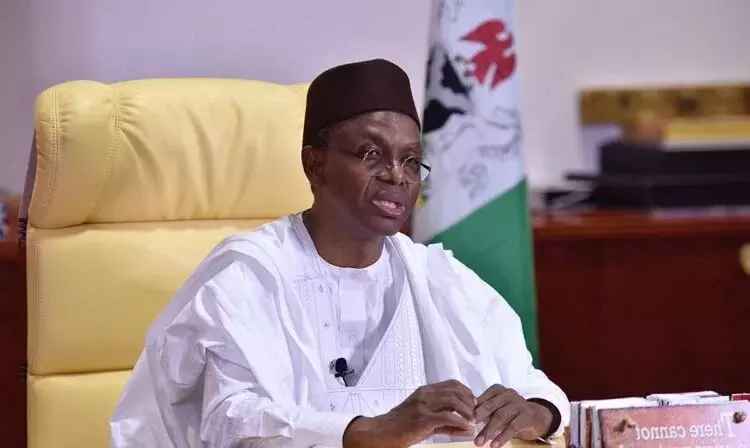El-Rufai: Architect of modern Kaduna State
In the First Republic, Kaduna town was capital of Northern Region. In 1967, when the regions were balkanised and 12 states were created, it still became capital of North Central State. Kaduna still retained its position as state capital, when additional states were created in 1976. In 1987, Katsina state was carved out of Kaduna […]

Governor Nasiru El-Rufai of Kaduna state
In the First Republic, Kaduna town was capital of Northern Region.
In 1967, when the regions were balkanised and 12 states were created, it still became capital of North Central State. Kaduna still retained its position as state capital, when additional states were created in 1976. In 1987, Katsina state was carved out of Kaduna State by the Babangida military regime. Still, Kaduna was retained as capital of ‘’new Kaduna State.’’
Significantly, there has not been any major infrastructure upgrade in Kaduna State since the 1960s, in spite of its status and population growth. For example, Kaduna state’s population was 6.1 million people, the third highest in the country, after Kano and Lagos states in the 2006 population census. The population has already reached about 10 million, with over 4 million people living in the Kaduna urban area alone. In addition, experts predict a continuing high urbanization and urban agglomeration in Kaduna. However, the present infrastructure can not support the current population, let alone cater for the projected population.
In June 2019, about a month after getting a second term, Governor Nasir El-Rufai moved to bridge this infrastructure deficit, when he signed a Memorandum of Understanding with China Civil Engineering Construction Corporation (CCECC), for the road component of Kaduna Urban Renewal Project. The project, according to him, is to accelerate the urbanization of Kaduna city and major towns like Zaria and Kafanchan, where more than two-third of the population lives. This project has 14 components which include roads, mass transit, housing, improved land use, street lights, parks and recreational centres. Others are markets, neighborhood and waste management centres.
Almost immediately, the contractors swung into action and the state capital has become one huge construction site. Men and equipment have been mobilized to different sites simultaneously. While some of these roads have been completed and opened for public use, others are in different stages of completion. On the other hand, surveys and valuation of property have reached advanced stages on the ‘’new Rabah Road’’. Indeed, the road project will start from Rabah road, at Arewa House junction, through Unguwar Kanawa, to old NDA, linking western bypass to Rigasa train station. In fact, this 14 kilometre road will have two bridges, one underpass and a flyover.
In addition, a road will be constructed from Police College Roundabout at Independence way, it will then cut through Kabala Costain and cross river Kaduna, where a bridge is already being constructed. Specifically, that road will link Kaduna North to Kaduna South local government areas, especially Aliyu Makama road, at Barnawa area. When completed, this road will reduce the volume of traffic across the stadium roundabout as it will provide an alternative route to the Stadium-Station Market-Barnawa road.
Aside road construction, there are other components of the Urban Renewal Project, like the Centenary Park, which is almost completed. In fact, it hosted the new year countdown celebrations, a night of music, food and fun, where friends, families and colleagues met to unwind amidst floodlights and fireworks. In addition, the world class Galaxy Mall on Waff road is part of the Urban Renewal Project. Already, investors like Shoprite and a leading cinema operator like Silverbird have shown interest in the mall. Likewise, the General Hassan Usman Katsina Park is also currently undergoing total reconstruction that would elevate it to its befitting status. It is expected to house a games arcade, a zoological garden, as well as a movie theatre.
In the accompanying interviews, the Commissioners and heads of agencies that are supervising various components of the Urban Renewal Project, present the state of the projects, one year down the road.
